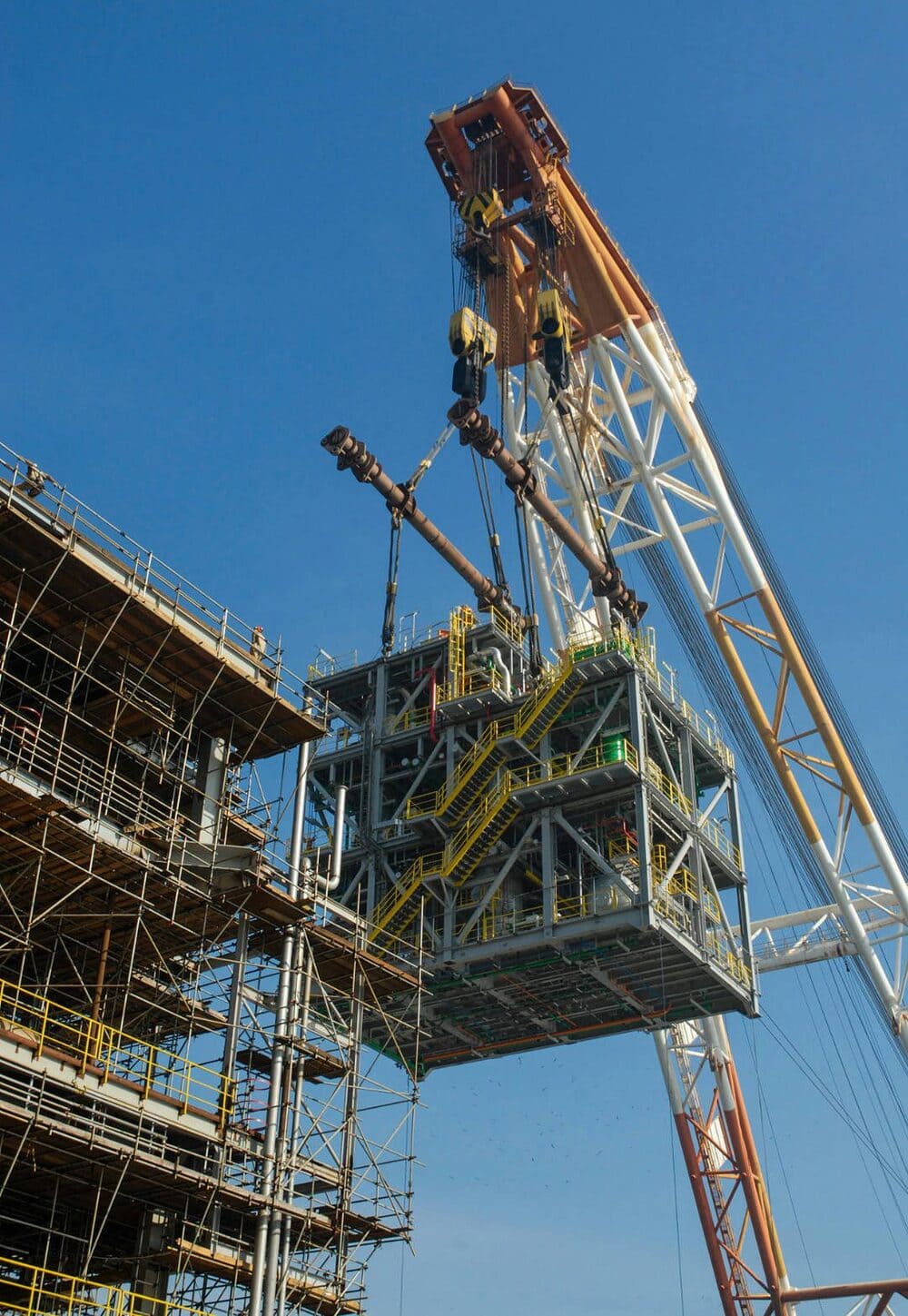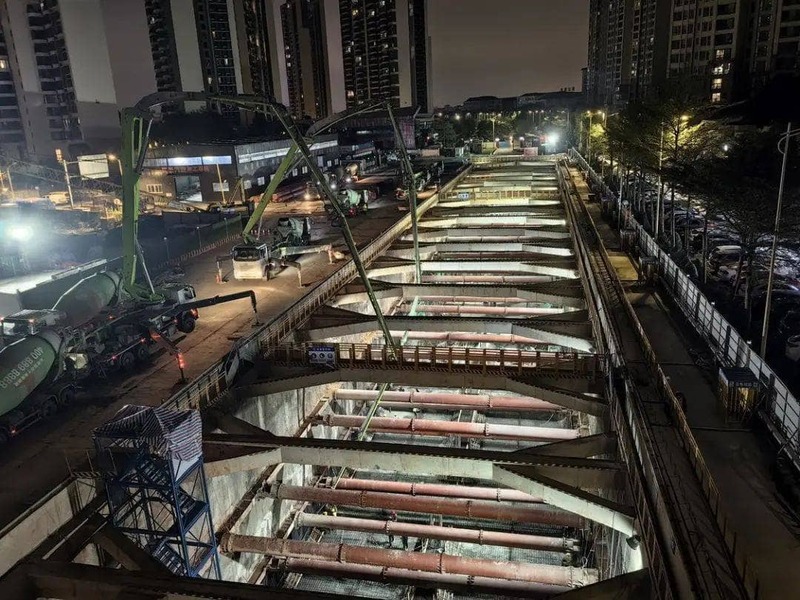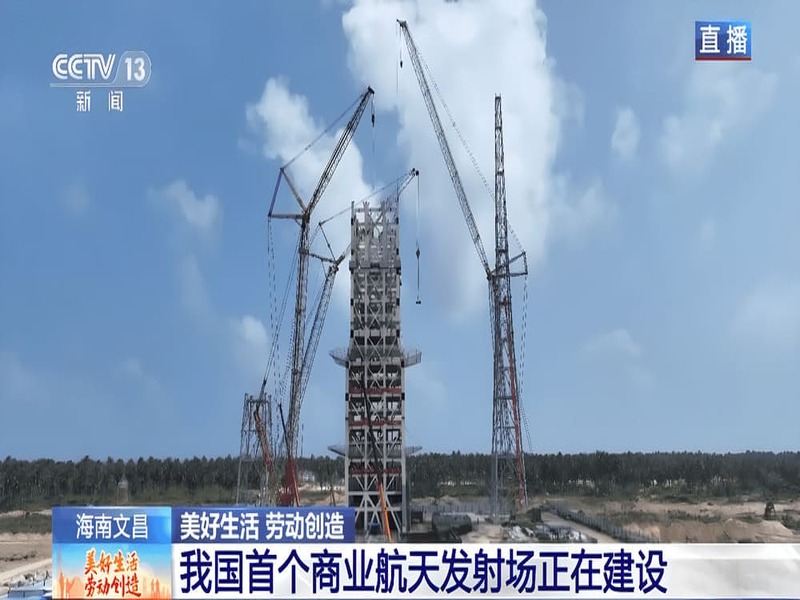1. Which scenarios are suitable for using steel structure platforms?
1.1 Industrial production line platform (heavy equipment load)
- Technical advantages: Adopting GB, EN, AISC design specifications, using Q355B S355JR A572 SM490A high-strength steel, the maximum span of a single span can reach 12 meters, and the bearing capacity can reach 5-8t/㎡, which can meet the installation requirements of heavy equipment such as stamping machine tools and assembly lines.
- Construction efficiency: The rate of prefabricated components in the factory reaches 90%, and the on-site assembly period is shortened by 50% compared with traditional concrete platforms. The main structure of a 1,000 m2 platform can be completed in just 30 days.
- Functional expansion: integrated power pipeline bridge and equipment maintenance channel to support rapid disassembly and modification during later equipment upgrades.
1.2 Construction operation platform (safety guarantee for high-altitude operations)
- Modular design: The standard unit size is 3m×6m, which can be quickly assembled into various forms, such as cantilever and attached. The construction of a 200㎡ aerial work platform can be completed within 48 hours.
- Safety configuration: equipped with anti-fall railings (height 1.2m), anti-slip pedals (friction coefficient ≥ 0.6), and a load monitoring system.
- Turnover and reuse: The component reuse rate exceeds 90%, which is suitable for turnover use in multi-section projects and reduces construction costs by 30%.
1.3 Equipment maintenance and repair platform (precision working space)
- High-precision design: using high-strength steel + bolt connection, the platform flatness error is ≤3mm/m, meeting the stringent requirements of precision instrument maintenance on levelness.
- Flexible layout: customizable lifting platform (lifting stroke 0.5-5m) and rotating operating table to meet the maintenance angle requirements of different equipment.
- Environmental adaptability: The surface is hot-dip galvanized for corrosion protection (coating thickness ≥ 85μm), resistant to salt spray corrosion for 1000 hours, and suitable for humid and highly corrosive scenes such as chemical industry and marine engineering.
1.4 Warehouse logistics sorting platform (space utilization optimization)
- Three-dimensional storage solution: multi-layer steel structure platform with steel ladder/elevator, vertical space utilization rate increased by 200%, a single platform can plan 5-8 layers of storage area.
- Load customization: The main channel area has a load capacity of 6t/㎡, and the shelf area has a load capacity of 3t/㎡, which can meet the high-frequency passage needs of forklifts and palletized goods.
- Intelligent integration: reserved shelf installation holes and lighting line interfaces can be quickly connected to the warehouse management system, improving sorting efficiency by 40%.
2. Why are steel structure work platforms the preferred choice for industrial settings?
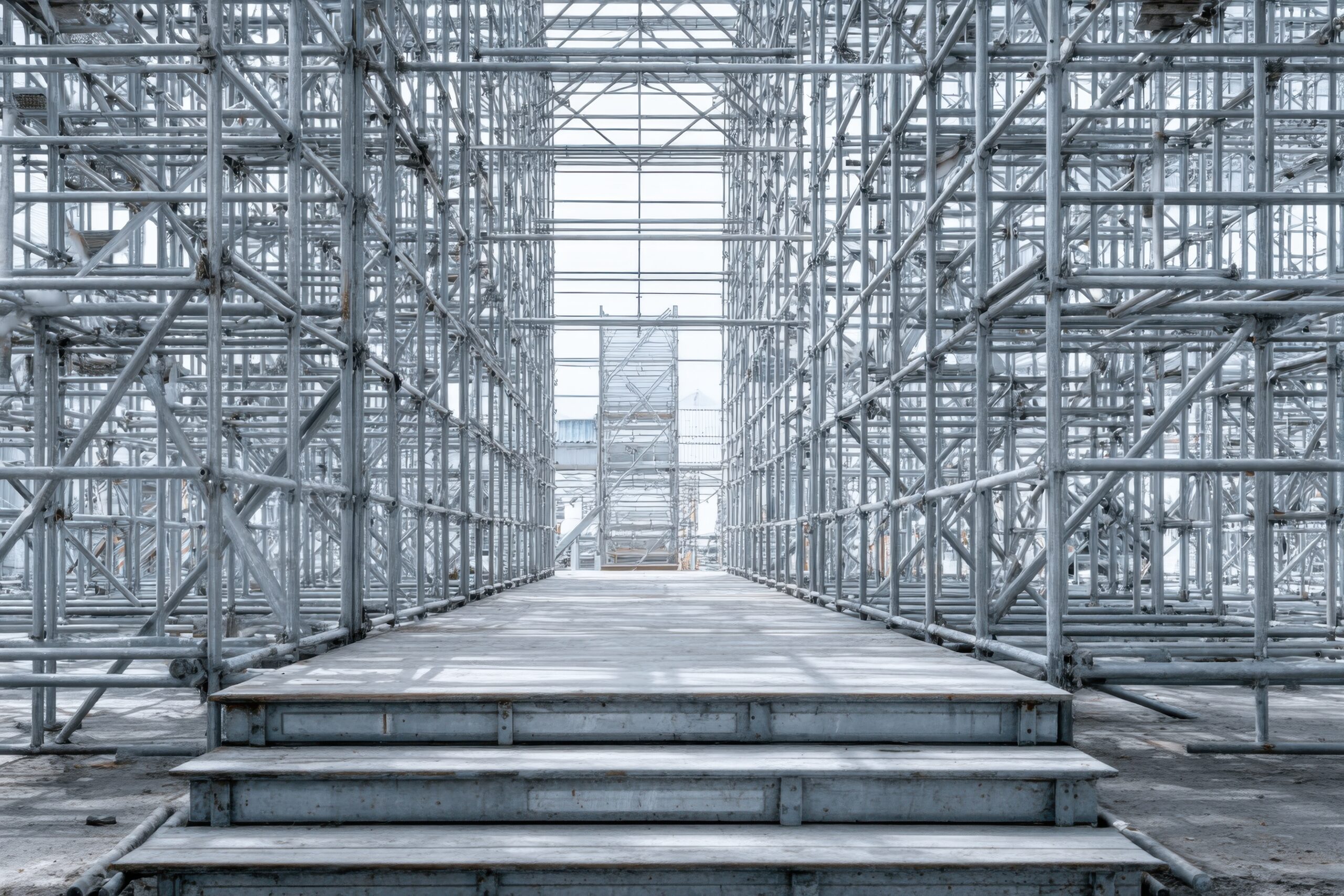
2.1 Extremely fast construction to shorten the production cycle
- Prefabrication mode: The main beams, secondary beams, stairs, and other components are all cut, welded, and anti-corrosion treated in the factory. Only bolt assembly is required on site, which shortens the construction period by more than 60% compared with traditional concrete pouring (requires 28 days of maintenance).
- Construction while producing: The modular interface design supports “non-stop transformation”. When a new platform is added next to the existing production line, the operation of the original equipment will not be affected.
2.2 High load-bearing capacity and safety to protect industrial operations
- Structural strength: It adopts the “main beam + secondary beam + support” triangular stability system, with a wind load resistance of 0.5kN/㎡ and a seismic fortification of 7 degrees, and has been verified by ANSYS finite element analysis.
- Safety system: standard overload alarm device (accuracy ±5%), emergency evacuation channel (width ≥1.2m), and can be integrated with intelligent monitoring cameras to monitor platform vibration and deformation in real time.
2.3 Green and sustainable, in line with ESG requirements
- Environmentally friendly materials: Steel is 100% recyclable, construction waste is reduced by 90%, and carbon emissions are 55% lower than concrete platforms (steel structure 1.5tCO₂/㎡ vs concrete 3.2tCO₂/㎡).
- Energy-saving design: optional photovoltaic panel roof (annual power generation covers 60% of platform lighting electricity consumption) and ventilation shutters to reduce operating energy consumption.
2.4 Flexible transformation to adapt to process iteration
- Modular expansion: New platform units can be quickly connected to the original structure by bolts. The renovation period is only 1/3 of that of traditional concrete platforms, and the cost is reduced by 70%.
- Function conversion: When the production line is adjusted, the platform can be quickly disassembled and reorganized into other uses, such as storage shelves and maintenance channels, increasing the utilization rate of the entire life cycle by 85%.
3. Comparison table of application scenarios of steel structure platforms
| Scene Type | Technical Solution | Core Performance | Cost reference |
| Industrial production line | Q355B S355JR A572 SM490A High-definition steel | Loading capacity 8t/㎡, anti-vibration frequency ≤50Hz | $220-280 USD/㎡ |
| Construction | Modular steel platform + fall protection system | Erection speed: 50㎡/day, wind resistance: 10 level | $180-240 USD/㎡ |
| Equipment maintenance | Customized steel truss + lifting device | Level error ≤ 2mm/m, corrosion resistance 10 years | $300-400 USD/㎡ |
| Warehouse Logistics | Multi-layer steel platform + shelf interface | Vertical utilization rate 250%, forklift speed 5km/h | $250-320 USD/㎡ |
4. Steel structure VS traditional concrete working platform: core index comparison
| Indicator | Steel structure scheme | Traditional concrete solution |
| Maximum single span | 12 meters (without columns) | ≤6 meters (load-bearing columns required) |
| 1000㎡ construction period | 30 days | 90 days (including maintenance) |
| Load Capacity | 5-8t/㎡ | 3-5t/m² |
| Retrofit flexibility | Module disassembly and assembly, completed in 2 days | Need to be demolished and rebuilt, construction period 15 days |
| Maintenance costs | Annual average $5-8 USD/㎡ (anti-corrosion + testing) | Annual average $10-15USD/㎡ (crack repair + waterproofing) |
| Carbon emissions | 1.5tCO₂/㎡ | 3.2tCO₂/㎡ |
5. Key Components and Technical Standards
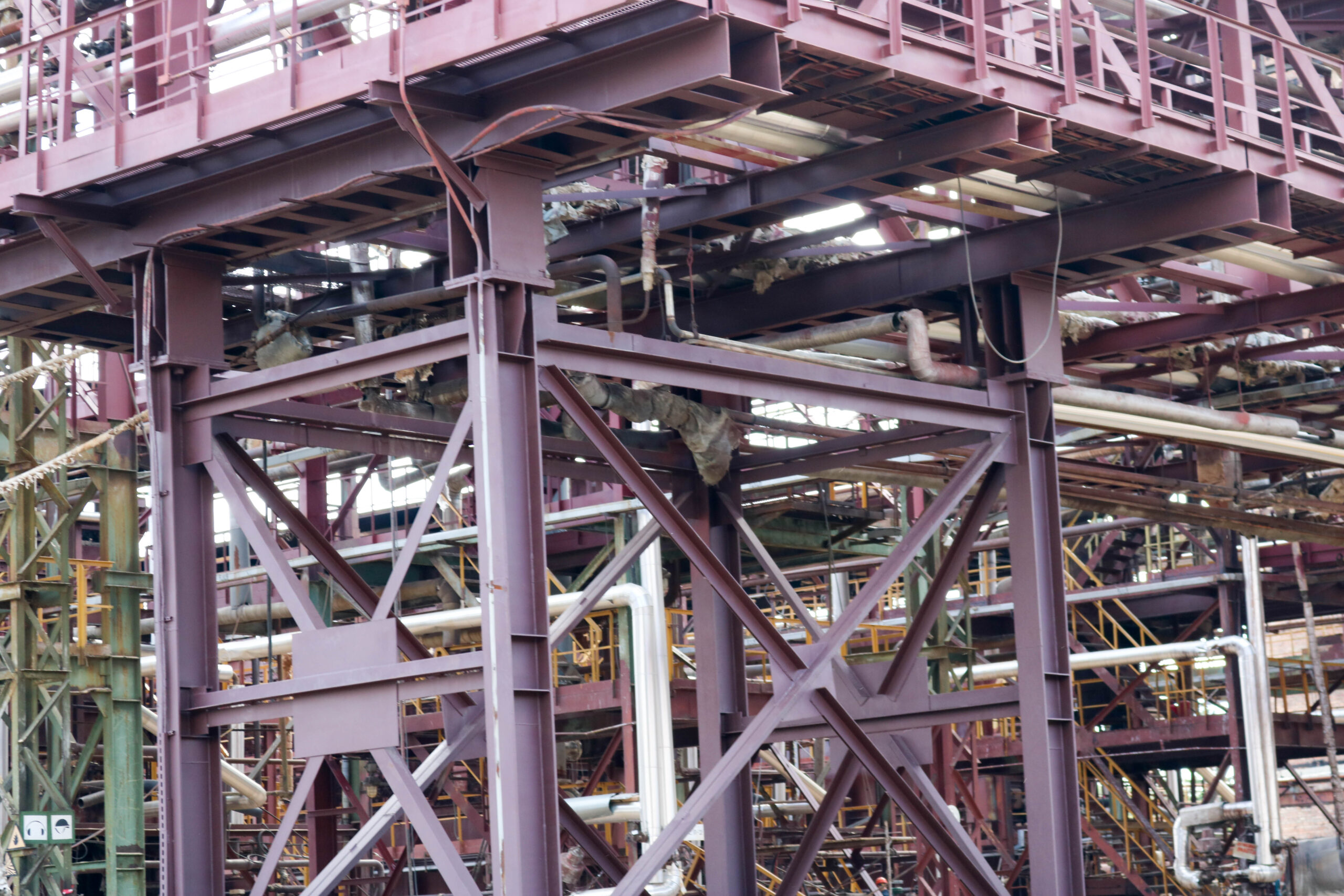
5.1 Load-bearing system
- Steel columns: Made of Q355B S355JR A572 SM490A high-strength steel, with cross-sectional dimensions of H300×300×10×15, compressive strength of 345MPa, and maximum column spacing of 6 meters.
- Main beam: H400×200×8×13 welded steel, deflection ≤L/400 when span is 12 meters, passed ultrasonic flaw detection (UT level II).
- Support system: Equipped with X-shaped angle steel support (∠75×6), the lateral stiffness is increased by 40%, suitable for high-vibration equipment areas.
5.2 Platform panel and safety protection
- Panel: 6-8mm patterned steel plate (anti-slip grade R11), or 30mm thick steel grating plate (opening rate 30%, easy for pipeline crossing).
- Guardrail: Steel tube railing (Φ48×3.5mm), crossbar spacing 400mm, skirting height 150mm, following EN 1090 structural steel standard.
- Connection method: High-strength bolts (grade 10.9) with a torque value of 400 N ·m to ensure impact resistance.
6. FAQ
Q1. What is the load-bearing capacity of the steel structure platform? Can it withstand heavy equipment?
Steel structure platforms handle heavy loads with high-strength steel and smart design. An H-shaped frame supports up to 8 tons/m²—about two cars on 1㎡. One auto production platform even carried a 12-ton stamping machine, passing load tests at 1.2 times design capacity. For ultra-heavy equipment, box beams or diagonal braces boost strength further.
| Comparison Dimensions | Steel structure working platform | Traditional platforms (such as concrete/wooden platforms) |
| Material properties | Made of high-strength steel, low-density but high-strength, good toughness, and strong fatigue resistance | Concrete has high density and heavy weight; wood is easily deformed by moisture, has limited strength, and poor durability |
| Carrying capacity | The H-shaped steel frame can carry up to 8 tons per square meter. Through structural mechanics optimization, it can carry super-heavy equipment (such as 12-ton stamping machine tools) and 1.2 times the design load without deformation. | Concrete platforms need to be thicker to increase their load-bearing capacity, which is not economical; wooden platforms cannot withstand heavy loads and are prone to breakage |
| Structural design | Modular design allows flexible use of box sections, diagonal braces, and other strengthening structures, shortening the construction period | Concrete platforms need to be cast on site and require a long curing time; wooden platforms have poor structural stability and are difficult to adapt to complex working conditions. |
| Space efficiency | Lightweight, thin structure under the same load, saving space and height; a multi-layer three-dimensional structure can be customized | Concrete platforms are thick and take up space; wooden platforms are difficult to implement multi-layer heavy-load designs |
| Maintenance costs | Long service life after surface anti-corrosion treatment, simple daily maintenance | Concrete is prone to cracking and weathering; wood needs regular anti-corrosion and anti-insect treatment, which requires high maintenance frequency and high cost. |
| Environmental performance | Steel can be 100% recycled and reused, and construction pollution is small | Concrete production consumes a lot of energy and is difficult to recycle after it is discarded; wood consumes forest resources and easily rots and pollutes the environment after it is discarded |
Q2. How much faster is the construction period of a steel platform than traditional concrete?
The steel structure platform adopts the “factory prefabrication + on-site assembly” model, and the construction speed is significantly better than traditional concrete. Taking a 1,000 square meter platform as an example, the steel structure only takes 30 days to complete the main installation, while the concrete platform needs to go through the processes of formwork, steel bar binding, pouring, and maintenance, with a construction period of up to 90 days. The steel structure shortens the construction period by 66%. This extremely fast construction advantage is particularly suitable for projects with urgent production needs or tight construction periods.
| Compare Projects | Steel structure platform | Traditional concrete platform |
| Build Mode | “Factory prefabrication + on-site assembly” | On-site formwork, reinforcement binding, pouring, and maintenance |
| Construction period (taking 1000㎡ as an example) | Complete the main installation in 30 days | 90 days |
| Construction period reduction ratio | – | 66% |
| Applicable scenarios | Urgent production needs and tight deadlines | Conventional construction projects |
Q3. How safe is the steel structure working platform?
The steel structure work platform ensures safety through GB, EN, and AISC standards. It uses anti-collapse design, with core nodes passing 500,000 fatigue load cycles for long-term reliability. Safety features include guardrails (≥1.2m), anti-slip pedals, and safety ladders to prevent falls.
Q4. How many years is the service life of the steel platform? Is the later maintenance cost high?
Steel structure work platforms offer long service life with low upkeep. Maintenance focuses on anti-corrosion (repainting every 5–8 years at $3–5/m²) and yearly weld inspections (1%–2% of initial cost). Overall, annual maintenance is just 5%–8% of the initial cost, far lower than concrete platforms at 8%–12%.
Q5. How environmentally friendly is the steel platform compared with the traditional steel-concrete platform?
Steel structure platforms excel in environmental performance. Steel is 100% recyclable, producing only 10% of the waste of concrete platforms. They also cut carbon emissions by up to 53%, with 1.5 tons CO₂ per m² during construction versus 3.2 tons for concrete, making them a low-carbon, sustainable choice.
| Comparison Dimensions | Steel structure platform | Traditional concrete platform |
| Material cycle | Steel is 100% recyclable, and the construction waste during demolition is only 10% of the concrete platform | Recycling is difficult, and the amount of construction waste generated is large |
| Low carbon emissions | Carbon emissions during the construction phase were 1.5tCO₂/㎡, a 53% reduction | Carbon emissions during the construction phase: 3.2tCO₂/㎡ |
| Energy-saving design | Photovoltaic panels and insulation layers can be integrated to reduce the carbon footprint by more than 40% over the entire life cycle | Limited energy-saving design and high energy consumption |
As a leader in industrial steel structure solutions, XTD Steel Structure has delivered 50+ steel platform projects for industries such as automobile manufacturing, chemical industry, and logistics. We ensure “zero error delivery” for each platform through BIM 3D modeling, intelligent manufacturing, and precise installation, helping companies improve space efficiency and reduce overall costs. Contact us now to get customized industrial platform solutions!

